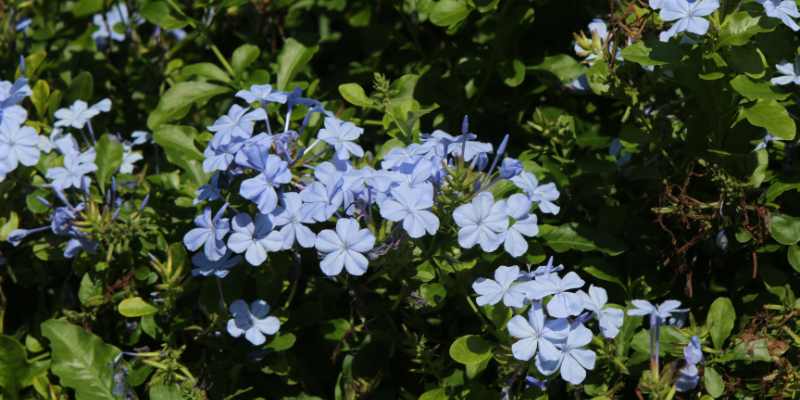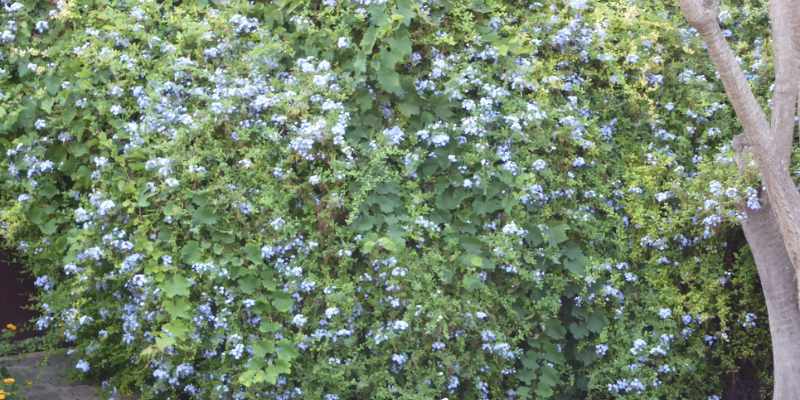Cape leadwort or Plumbago auriculata is a climbing woody climbing plant with long blue flowering, and with semi-evergreen to evergreen foliage.
Common in seafront gardens along the Atlantic coast and in the south of France since it is not very hardy, this beautiful plant native to South Africa is a delight throughout summer, putting on an avalanche of small sky‑blue to lavender‑blue flowers.
Its bushy, trailing habit makes it suitable for use as a hedge or along a low wall. When trained, Plumbago can easily cover up to 5 m.
Should Plumbago be pruned, how often and how? We tell you all about it in this tutorial!

Is pruning necessary, and when?
Plumbago auriculata (also known as Plumbago capensis) generally flowers fairly early, from around May until the end of October. As with many climbing plants and bushes that flower in summer, pruning promotes better flower induction, but it is not essential. If Plumbago becomes invasive, however, it is useful to cut the plant back to maintain a harmonious habit. In both cases, carry out pruning in late winter, around March or early April, and only every 3 or 4 years, which helps avoid ageing of the plant. Removing spent flowers during the flowering period also encourages development of new flower buds.
Technique and tips
For Plumbagos trained as climbers, prune only the secondary branches, and do so lightly: carry out this thinning prune in late winter or early spring, only on the younger horizontal shoots, in order to produce new shoots that will bear the flower buds. Using a pruning shear, cut shoots by about one‑third, just above a branching.
For well‑established Plumbagos that have grown too large for your liking, simply remove old wood, dried stems, and cut back the most vigorous stems to obtain a harmonious shape and mass.
NB: As for bush‑form Plumbagos (Ceratostigma), prune them by about one‑third when growth resumes to thicken the clump.

Equipment needed
- a clean, sharp pruning shear, disinfected with 90% alcohol
To learn more...
- Everything about Plumbago in our complete fact sheet
- Find our range of Ceratostigma in our online nursery
- Discover 8 climbing plants with blue flowers every garden should have in our advice sheet































![[pruning plant="Plumbago"] Pruning Plumbago](https://en.promessedefleurs.eu/blogwp/wp-content/uploads/2023/02/Comment-tailler-le-Plumbago-.png)
Comments